The New Celebrity Scientists
THE
New CELEBRITY
SCIENTISTS
Out of the Lab and into the Limelight
Declan Fahy
ROWMAN & LITTLEFIELD
Lanham Boulder New York London
Published by Rowman & Littlefield
A wholly owned subsidiary of The Rowman & Littlefield Publishing Group, Inc.
4501 Forbes Boulevard, Suite 200, Lanham, Maryland 20706
www.rowman.com
Unit A, Whitacre Mews, 26-34 Stannary Street, London SE11 4AB, United Kingdom
Copyright 2015 by Rowman & Littlefield
All rights reserved . No part of this book may be reproduced in any form or by any electronic or mechanical means, including information storage and retrieval systems, without written permission from the publisher, except by a reviewer who may quote passages in a review.
British Library Cataloguing in Publication Information Available
Library of Congress Cataloging-in-Publication Data
Fahy, Declan.
The new celebrity scientists : out of the lab and into the limelight / Declan Fahy.
pages cm
Includes bibliographical references and index.
ISBN 978-1-4422-3342-3 (cloth : alk. paper) ISBN 978-1-4422-3343-0 (electronic) 1. ScientistsBiography. I. Title.
Q141.F24 2015
509.22dc23
2014039192
 The paper used in this publication meets the minimum requirements of American National Standard for Information SciencesPermanence of Paper for Printed Library Materials, ANSI/NISO Z39.48-1992.
The paper used in this publication meets the minimum requirements of American National Standard for Information SciencesPermanence of Paper for Printed Library Materials, ANSI/NISO Z39.48-1992.
Printed in the United States of America
For Louisa, with love
Acknowledgments
I would like to thank Matthew Nisbet, Helena Sheehan, Brian Trench, Rodger Streitmatter, W. Joseph Campbell, Leonard Steinhorn, Kathryn Montgomery, Laura DeNardis, Amy Eisman, Caty Borum Chattoo, Massimiano Bucchi, Michael Cronin, and Aileen Fyfe for their generous advice and guidance at various stages of this books development. I also would like to thank, for their research assistance, Jan Boyles, Conor Fahy, Amanda Winkler, Erica Snchez-Vzquez, Kristina Brooks, Monika Thomas, and Ryan Schuette. Not least, I would like to express my sincere thanks to Leanne Silverman, Andrea O. Kendrick, and Jehanne Schweitzer at Rowman & Littlefield for all their editorial input and support.
ONE
A Brief History of Scientific Celebrity
Charles Darwin was a master of public relations. While T he Origin of Species swept through nineteenth-century culture, shattering the prevailing religious orthodoxy about the dawn of human life, Darwin cultivated his popular image. He distributed mass-produced photographs, signed autographs, collected songs and poems about himself, responded to his voluminous mail with preprinted cards, refused most interviews, and avoided speaking before crowds where questions might catch him off guard. He met author George Eliot and received an inscribed copy of Das Kapital from Karl Marx.
The theory of evolution by natural selection he outlined in his 1859 book coursed through Victorian society, spreading far beyond learned journals and professional societies. The general public could buy a low-cost edition of The Origin of Species . Magazines spread his image and ideas through popular culture, sometimes in strange ways. Caricaturists and cartoonists, for example, drew Darwins headwith its distinctive long beard and large dome of his skullon the body of an ape. Darwin became public property. Deep down, wrote one historian, Darwins sons and daughters were forced to accept that he was not just their father. He belonged to everybody. In his time he was a scientific celebrity.
The great naturalist showed that fame, lasting fame, is never just the inevitable consequence of great achievement, even one as seismic as The Origin of Species . The world must hear about the achievement.
Nowhere is this more clear than in the case of the twentieth centurys most iconic scientistphysicist Albert Einstein. He personified science in mass culture, and he became a global symbol for the minds phenomenal power. He exploded into popular consciousness in 1919 after his general theory of relativity, which was nothing less than a new way of viewing the physics of the universe, was confirmed by two independent experiments during a solar eclipse. Afterward, Einstein received significant journalistic attentionRevolution in Science. New Theory of the Universe, reported The Times but he vaulted to global celebrity two years later when he visited the United States to raise money and public awareness for Zionist causes.
The two-month visit in 1921 sparked a frenzy of public and media interest. The New York Times described a man in a faded grey rain coat and a flopping black felt hat that nearly concealed the grey hair that straggled over his ears.... But underneath his shaggy locks was a scientific mind whose deductions have staggered the ablest intellects of Europe. The New York Evening Post described Einsteins Berlin home and detailed his love of Dostoyevsky, his working methodslost in intense concentration in his room alone for three or four daysand his fondness for cigars. The American press, wrote one scholar, was the instrument that made Einstein into a celebrity .
On the strength of all this coverage, as relativity matched the mood of uncertainty that followed the savagery of World War I, Einstein became a global star. The London Palladium asked him to put on his own show. Girls in Geneva mobbed him. One tried to cut off a lock of his hair. Telescopes and towers were named in his honor, as were children and cigars. When he and his wife, Elsa, attended the 1931 premiere of City Lights , photographers snapped their picture on the red carpet alongside the films star, Charlie Chaplin. Abraham Pais, one of Einsteins former colleagues and a historian of science, later wrote: Einstein, creator of some of the best science of all time, is himself a creation of the media in so far as he is and remains a public figure.
As Einstein penetrated deep into popular culture in the early twentieth century, the mass media expanded dramatically. By the end of the century, the media had become a center of public life with enormous power. For most adults the media are the source of most ideas and information about science and issues affected by science. In their myriad forms, the media disseminate information; shape public opinion; and convey ideas about how the world works, how the world can be experienced, how society is organized, and what issues matter for citizens.
The media also focus overwhelmingly on individuals, leading to our pervasive celebrity culture where fame has become the most powerful way of understanding ideas in a complex world. Within this culture, a new type of scientist has come out of the lab and into the limelightthe celebrity scientist.
These scientific stars grip the public imagination, using their vast influence to stimulate new thinking, drive scientific controversies, enhance public understanding, mobilize social movements, and shape policy. In celebrity culture, they speak for science in public. But more than that, their fame gives them power within science. Their stardom affects the inner workings of science, shaping the discovery of new knowledge about our natural world.
Because of their profound ability to influence public life and professional research, the celebrity scientists constitute a new scientific elite.
Fred Hoyle and Carl Sagan: Mass Media Stars
In 1950, British astronomer Fred Hoyle became an emblematic figure in this new media age of science. That year, he delivered a series of BBC radio lectures on The Nature of the Universe that were so successful that listeners voted him Britains most popular broadcaster. In his soft Yorkshire accent, he clearly explained cosmology and evoked familiar domestic scenes to make complex science part of listeners everyday worlds. Even professional physicists stopped work and tuned in. The lectures were subsequently printed as The Nature of the Universe , which sold seventy-seven thousand copies in just six months, making it an early scientific best seller. The lecture and book made Hoyle an international celebrity.
Next page
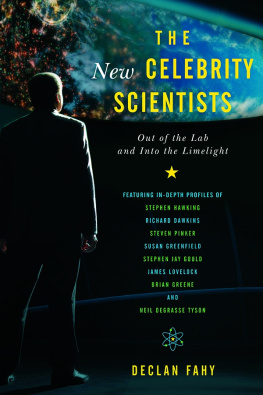


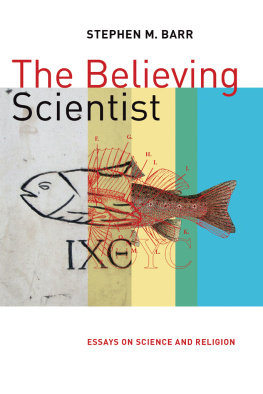



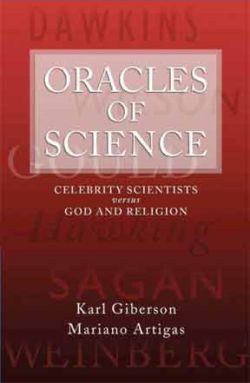
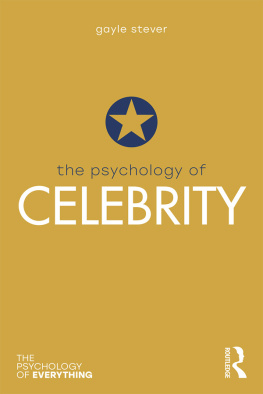
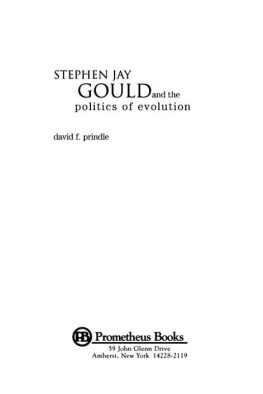
 The paper used in this publication meets the minimum requirements of American National Standard for Information SciencesPermanence of Paper for Printed Library Materials, ANSI/NISO Z39.48-1992.
The paper used in this publication meets the minimum requirements of American National Standard for Information SciencesPermanence of Paper for Printed Library Materials, ANSI/NISO Z39.48-1992.